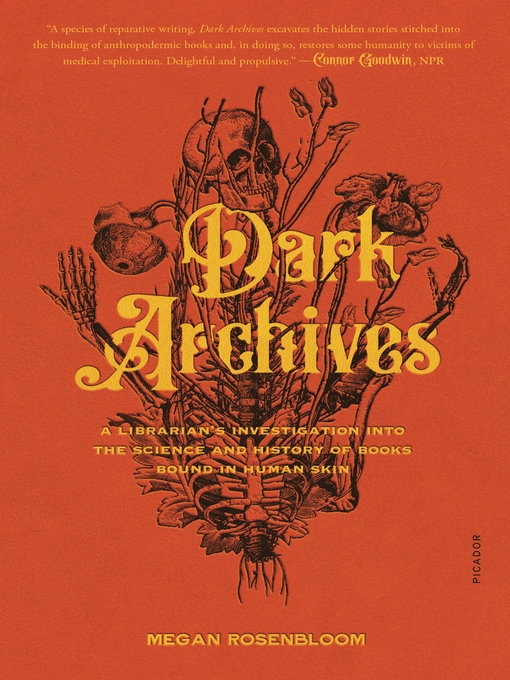
Dark Archives
A Librarian's Investigation into the Science and History of Books Bound in Human Skin
- اطلاعات
- نقد و بررسی
- دیدگاه کاربران
نقد و بررسی

August 10, 2020
UCLA librarian Rosenbloom debuts with a fascinating and sober-minded exploration of the history, methodology, and ethics of anthropodermic bibliopegy, the practice of binding books in human skin. She details the loosely regulated professional realm of the 19th-century doctors who used skin from medical cadavers to create most of the world’s known anthropodermic books, and embarks on a transatlantic search for specimens, including multiple copies of 18th-century African American poet Phillis Wheatley’s Poems on Various Subjects, Religious and Moral and a 19th-century highwayman’s memoir bound in the author’s own skin (per his pre-execution request). Rosenbloom’s conversational tone and obvious excitement at the thrill of the chase counterbalances the macabre nature of her subject. While she believes in the value of preserving anthropodermic books in order to “reckon with... the culture in which they were created,” she interviews skeptics, including Princeton librarian Paul Needham, who advocates strongly for their interment. Lighter moments, such as a visit to an artisanal tanning facility that results in the destruction of Rosenbloom’s Keds, make her obsession with the sometimes gruesome stories behind these books relatable. This unique and well-researched account shines an intriguing light on a hidden corner of the rare books world. Agent: Anna Sproul-Latimer, Neon Literary.

September 1, 2020
This intriguing intersection of history, science, and the macabre stems from Rosenbloom's work as a researcher for The Anthropodermic Book Project, a team dedicated to investigating books bound in human skin. She digs deep into the origin story of these morbid artifacts. While many would associate these books with serial killers and bogeymen, most were actually created by bibliophile doctors from the preserved skin of deceased patients. This sparks a unique conversation about consent, medical ethics, and legalities that runs throughout the book. Some call for anthropodermic books to be removed from collections and interred, while others (including the author) believe their cultural significance is worth preserving to understand the environment that led to their creation. Rosenbloom visits a boutique tannery in New York to learn how human skin could be processed into suitable leather for bookbinding (a passage not for the squeamish). She also touches on the future of anthropodermic books, interviewing a non-profit dedicated to postmortem conservation of tattooed skin. Rosenbloom's passion for the topic is infused in each page, making for a captivating read.(Reprinted with permission of Booklist, copyright 2020, American Library Association.)

Starred review from September 1, 2020
While the idea of anthropodermic books, or books bound in human skin, may conjure images of serial killers toiling in underground lairs, Rosenbloom (collections strategies librarian, Univ. of California Los Angeles) shows that the truth is both more mundane and more sinister. Her investigation into the past reveals much about the history of medicine and the ways 18th- and 19th-century American and European medical research were inextricably connected to slavery and the prison system, while her investigations into the current state of anthropodermic books involve working with scientists who are able to test minute amounts of material to determine its origin, considering the motives of forgers (money, chiefly), learning about contemporary tanning practices, and considering the pros and cons of keeping human-skin books in one's collection. This wide-ranging, engagingly written, and unusual book may not satisfy readers looking for gore, but it will fascinate those interested in a new angle from which to consider what it means to be human and what our responsibilities are to other people. VERDICT Essential for most libraries, especially where books about medical history and material culture circulate well.--Stephanie Klose, Library Journal
Copyright 2020 Library Journal, LLC Used with permission.




دیدگاه کاربران